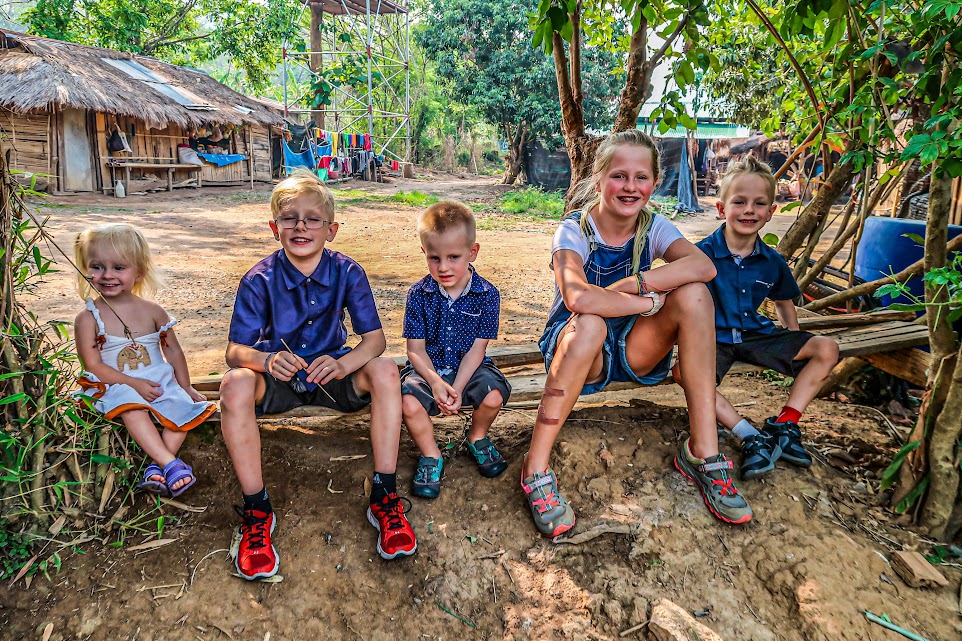

*Disclaimer: This post may contain affiliate links. Opinions shared are my own, and I only endorse products I support. By clicking on any of the links below, I may get a small commission if you purchase at absolutely no additional charge to you. I appreciate your support.*
Chiang Mai, Thailand: famous for elephants, known for its lush jungles and old city center, and one of our favorite cities in the world! We spent a month living in Chiang Mai in 2019 and just returned for our first visit back. I can tell you, it was like coming home!
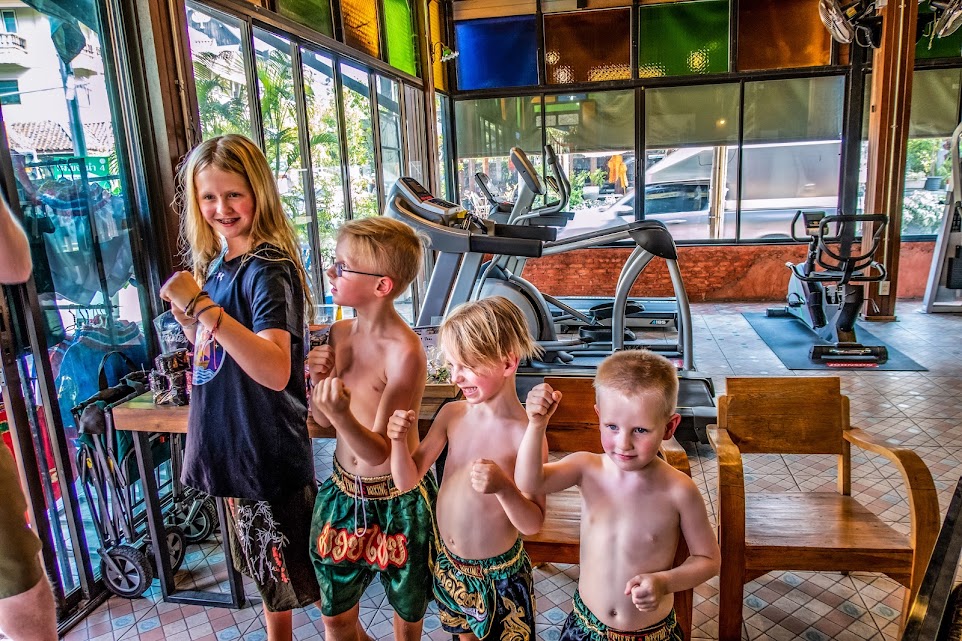
Chiang Mai is a fantastic destination for families. While Bangkok is a favorite of ours as well, Chiang Mai offers another side of Thailand to enjoy. The lush forests are home to lots of elephants and offer a gorgeous backdrop to this lovely city.
In case you are considering Chiang Mai for an elephant sanctuary visit, be sure to read up on our three different elephant experiences here.
However, we visited Chiang Mai on this last visit and didn’t even visit the elephant sanctuary. We had a BLAST. The kids would love to go back. From our favorite water park in the world, Grand Canyon Water Park, to the vibrant night markets and the really good food, Chiang Mai is always on our list of favorite cities.
Chiang Mai is an ideal destination for families, offering a safe, welcoming environment and a relaxed pace of life. Friendly locals and decent infrastructure make traveling with children both easy and enjoyable.
While Thailand is not a first-world country, it has long been a tourist hot spot. Tourist options, from transportation to things to do, are readily available.
Chiang Mai is steeped in culture. We love to stay within the old city wall, which I would recommend. A lot goes on within walking distance, and we love to hit up the night market for dinner each day we are there.

We came to Chiang Mai for elephants and found all the other things we love about this city! Seeing elephants is quite an experience, and one I definitely recommend. You can read about our three different visits to see elephants here.
The ideal time to visit is during Chiang Mai’s cool, dry season from November to February. The pleasant weather makes outdoor activities more comfortable, and elephants are often more active around water sources.
The green season, from June to October, offers lush scenery, though you should expect occasional rain. We recently visited in July and had some significant rain every day, but we didn’t mind. This kept things cool and green.
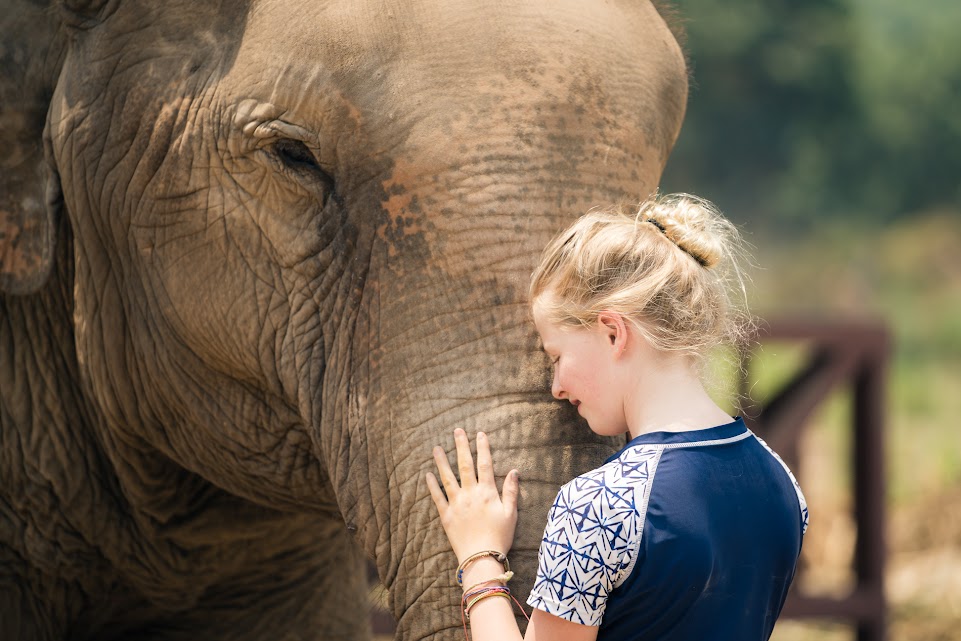
Admission prices vary depending on the program and usually include transportation, meals and a guide. Full-day visits cost around 2,000 to 3,000 Baht per person (around $61.90 to $92.85 USD per person), while half-day visits start at about 1,500 Baht. Some sanctuaries, like Elephant Nature Park, also offer overnight or multi-day stays for a more immersive experience at higher rates.
Choose a sanctuary that truly puts the elephants’ welfare first, with no riding, no performances and no bullhooks. The most ethical places focus on observation rather than direct interaction.
Book early, especially in high season, as many sanctuaries limit visitors to reduce stress on the animals. Dress comfortably in breathable clothing and closed-toe shoes, and bring a hat, sunscreen, insect repellent and a reusable water bottle.
We got REALLY dirty on our visits, especially when we got in the mud with the elephants. Don’t wear shoes or clothes you want to keep white and clean! Wear washable things and wear rubber shoes that you can wash easily. You can read more about our visit here.
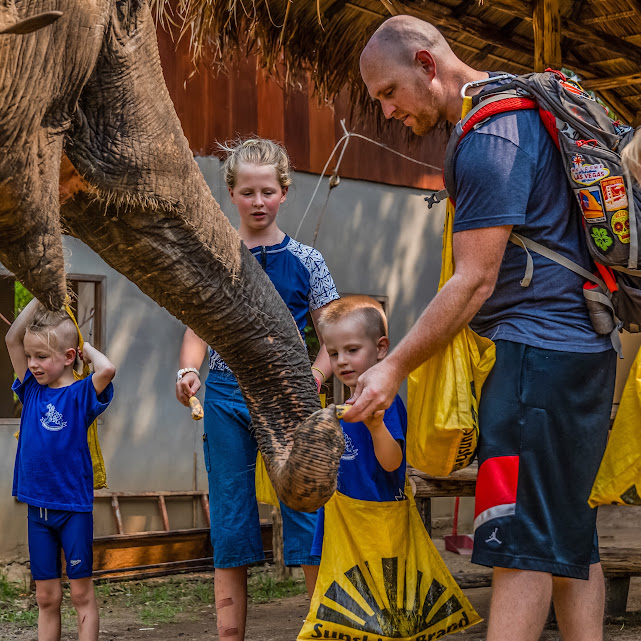
Once there, engage with the guides, they can share the elephants’ rescue stories, explain their behavior and talk about conservation work. Take time to simply watch the elephants roam, forage and play with their herd.
Chiang Mai Night Safari offers a thrilling way for families to experience wildlife after dark. Unlike a traditional zoo, it takes you on an open-air tram ride through different animal zones, where you might spot tigers, lions and giraffes in their nocturnal element. Walking trails and live shows add even more excitement, making it a full evening of adventure.
The cool, dry season from November to February is ideal, with pleasant evenings and more active animals. That said, the Night Safari is open year-round, so it’s a great option any time you visit.
Evenings are busiest, so arriving early can help you beat the lines for the tram.
We had a great experience here and liked seeing the animals more active at night.
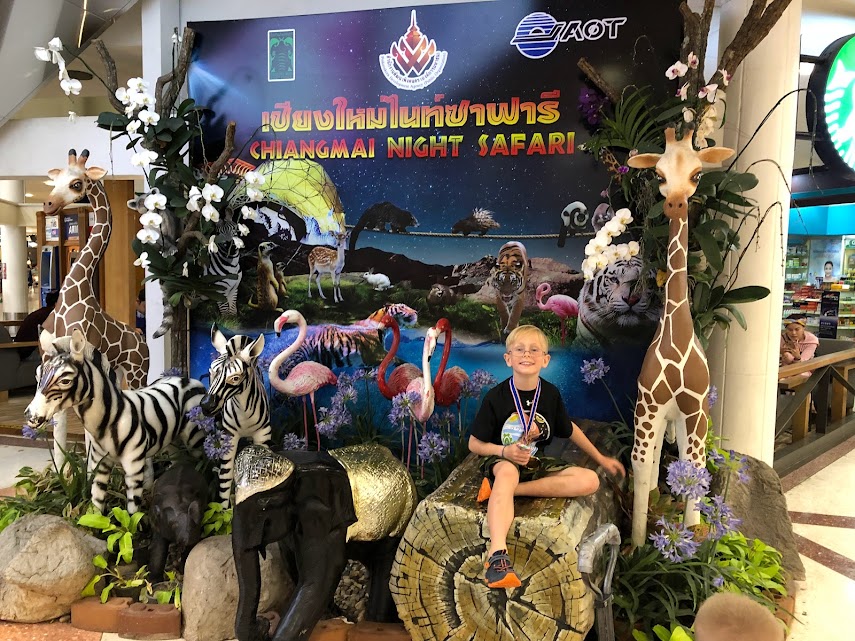
Tickets vary depending on the package, usually costing around 563.01 Baht per person ($17.42 USD per person).
Kids under 100 cm often enter for free, while those between 101 cm and 140 cm enjoy reduced prices around $9.10 USD. Rates can also vary if you book through a tour operator or travel agency.
A Thai cooking class is a fun and flavorful way for families to dive into Chiang Mai’s rich culture. More than just preparing a meal, you’ll learn the fundamentals of Thai cuisine, from picking fresh ingredients at a local market to balancing sweet, sour, salty and spicy flavors.
Many schools cater specifically to families, making it an experience everyone can enjoy together.
Cooking classes run year-round, making them a great option no matter the season. Since most activities take place indoors or under cover, they’re perfect for a rainy day during the green season or as a cool escape from the midday heat in March to May.
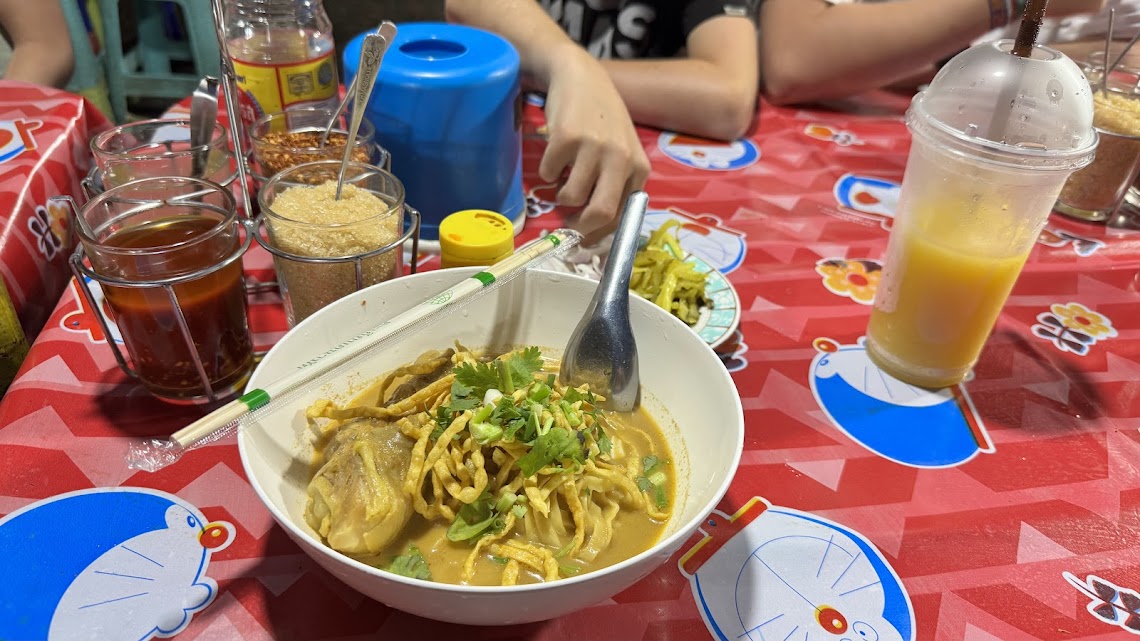
This hands-on cooking experience in Chiang Mai is designed to introduce you to the flavors and traditions of Thai cuisine. The day begins with a stop at a local market, where you’ll explore the vibrant stalls and pick up fresh herbs and produce. From there, you’ll visit a family-owned organic garden and kitchen, where a local chef guides you step by step in preparing authentic dishes. You’ll learn to make curry paste the traditional way, cook a selection of starters, main dishes and a dessert, and then sit down to enjoy the meal you’ve created in a peaceful garden setting.
The activity runs for about 3.5 hours, including pickup and drop-off from hotels within a short distance of Chiang Mai’s Old Town. With prices starting at around $28 USD per person, the class offers an affordable and enjoyable way to deepen your appreciation of Thai food and culture while creating dishes you can take home to impress family and friends.
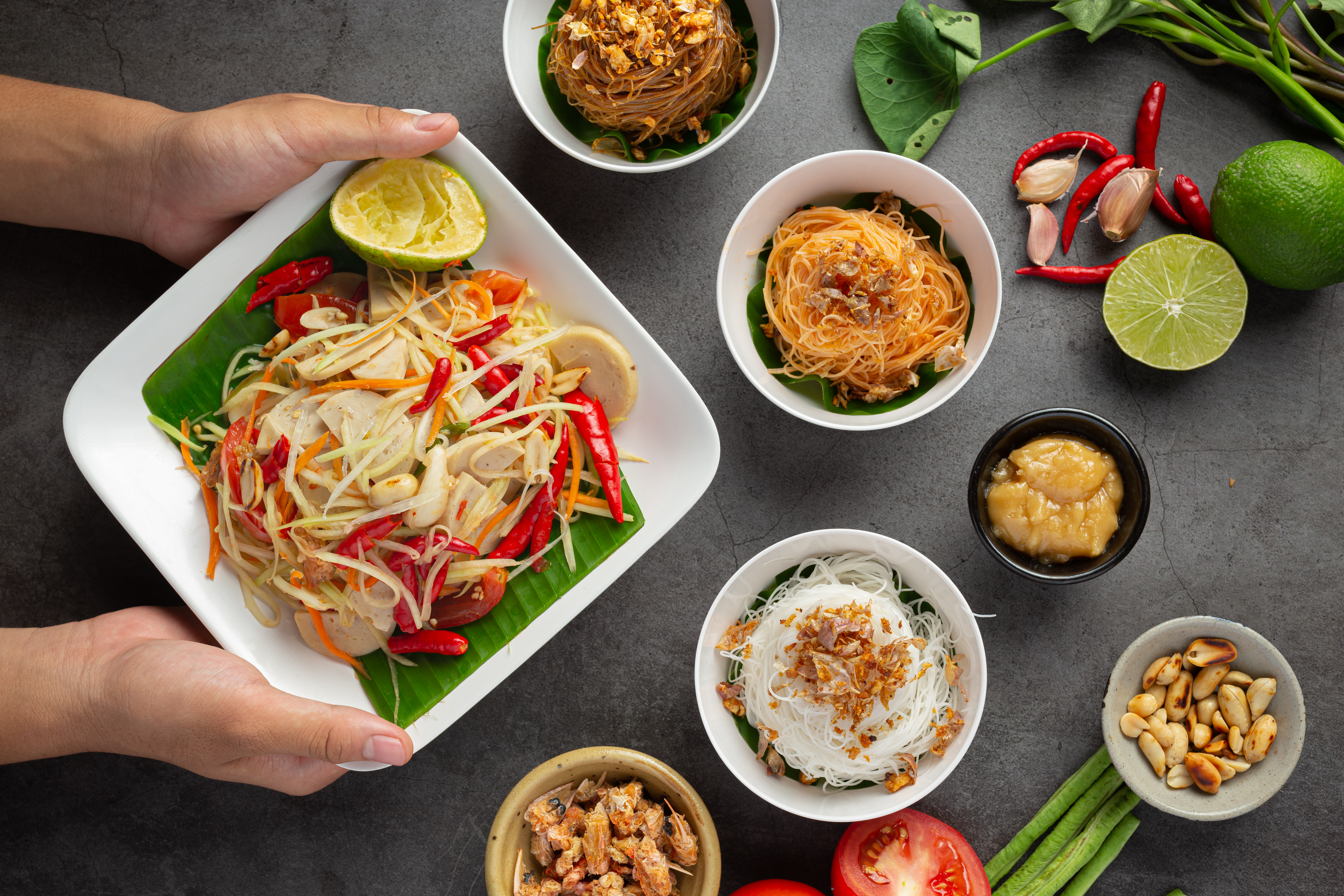
This cooking class near Chiang Mai combines food, culture and farm life in one memorable experience. After pickup, you’ll either visit a bustling local market or head straight to an organic farm, where you can collect fresh eggs, pick vegetables and even feed the chickens before moving on to the cooking session. Each guest has their own station in an open-air kitchen, with guidance from friendly instructors on how to prepare authentic Thai recipes such as Pad Thai, Tom Yum, curries and spring rolls.
The program runs for about 3.5 to 7 hours, depending on whether you choose a half-day or full-day option. Prices begin at around $33 USD per person, with extended sessions costing a bit more. Highlights include making curry paste from scratch, preparing coconut milk in traditional style, learning about Thai herbs and produce and, of course, enjoying the dishes you’ve created in a relaxed farm setting.
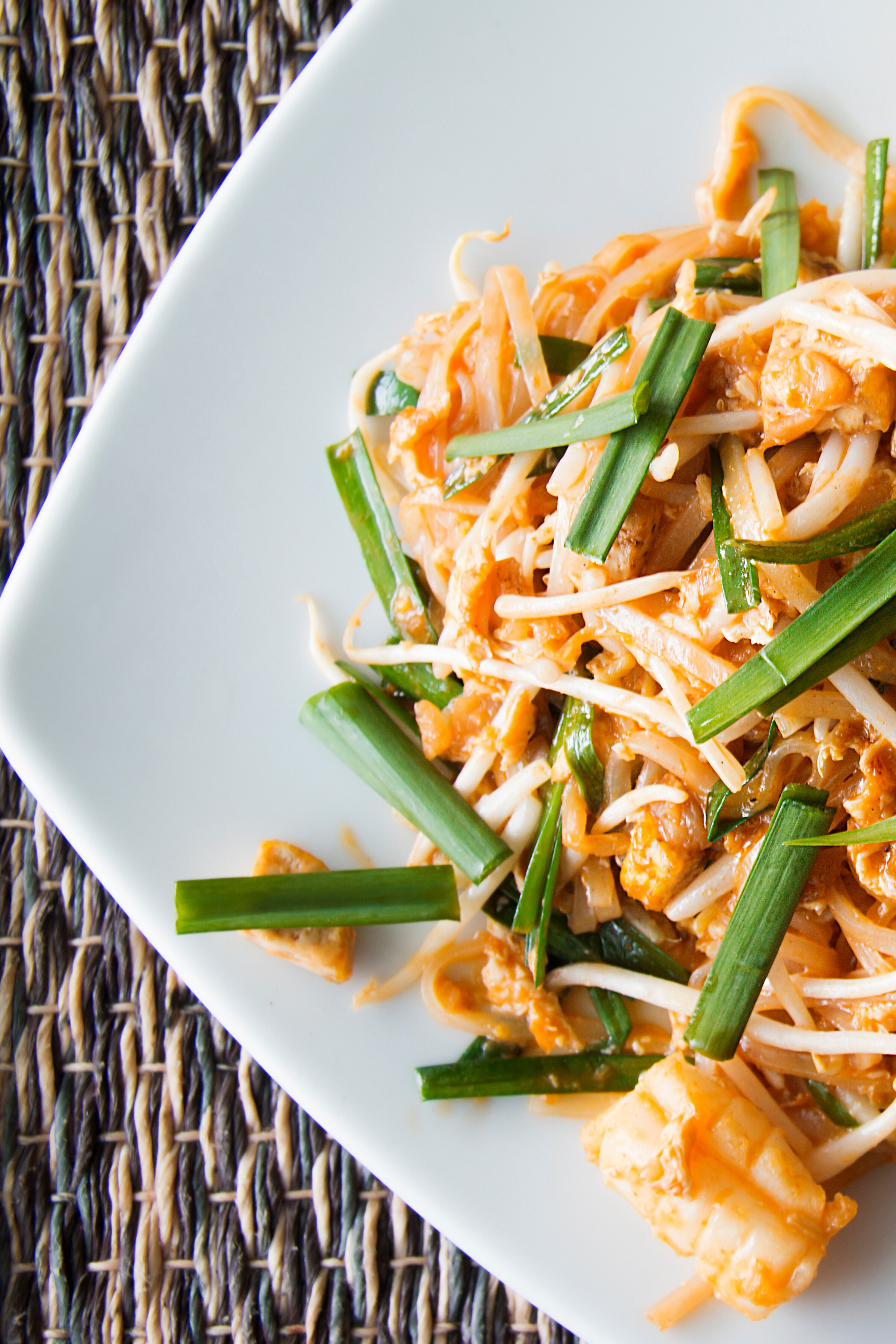
Half-day courses last around 4–5 hours and usually cost around 1,000 to 1,500 Baht per person ($30.93 to$46.40 USD per person). Full-day classes run 7–9 hours and start from about 1,500 Baht. Most prices include hotel pick-up, all ingredients, a market visit and a recipe book to take home. Many schools offer discounts for children, and younger kids may even join for free with a paying adult.
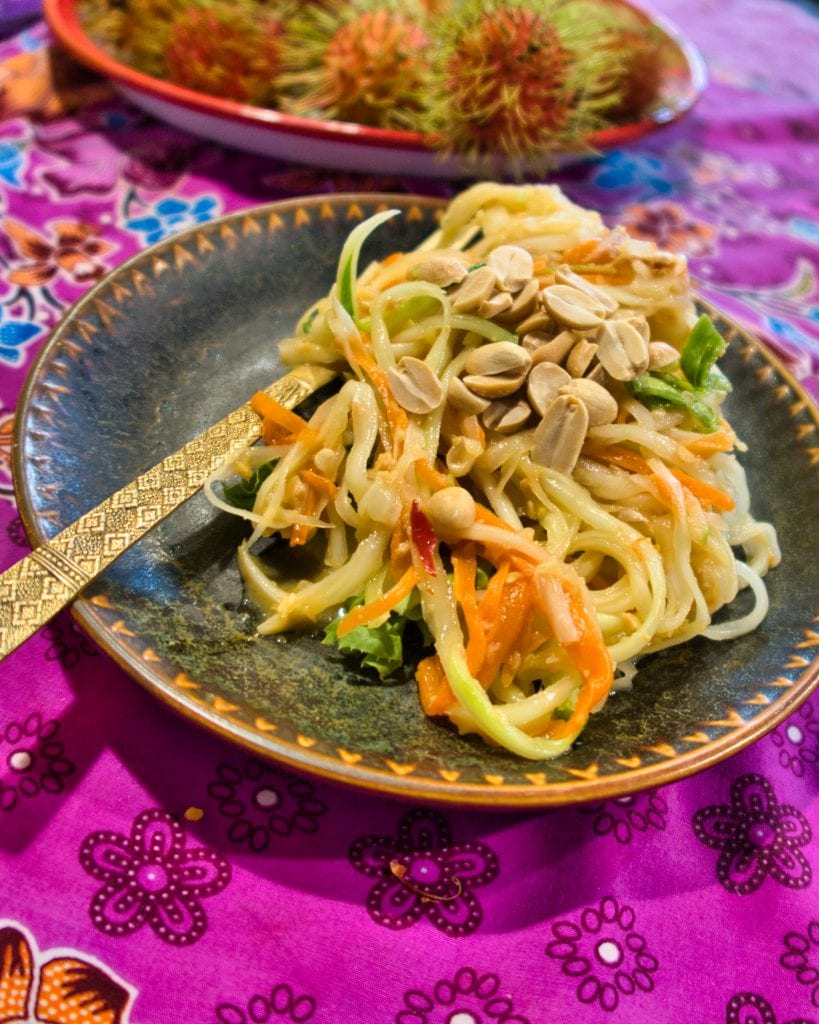
Choose a school that welcomes families and, if possible, one with a garden or farm where kids can pick their own ingredients.
Opt for a class that includes a market visit, seeing the colors and smells of Thai produce is a fun introduction to the day. We’ve done this several times and it’s always fun to see a day market.
Take advantage of the chance to choose your dishes; let the kids pick their favorites while you select something new to try.
Once in the kitchen, get everyone involved, from pounding curry paste to stir-frying in a hot wok. Instructors are patient and happy to guide little hands.
Chiang Mai’s Old City and surrounding areas are rich with Buddhist temples, or wats, that form the heart of the city’s cultural identity.
From the golden elegance of Wat Phra Singh to the mountaintop majesty of Wat Phrathat Doi Suthep and the ancient ruins of Wiang Kum Kam, each site offers families a step back in time and a glimpse into a living spiritual tradition. Visiting these temples is peaceful, educational and a perfect way to teach children about culture and respect.
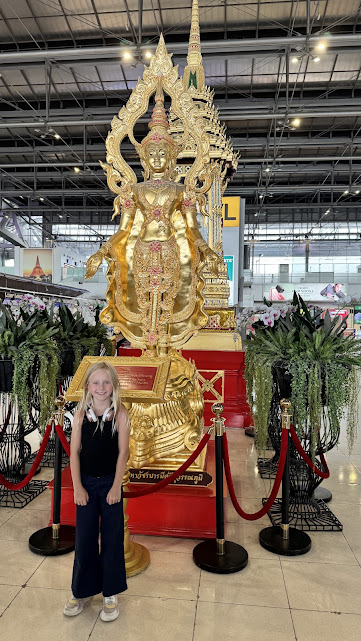
The cool, dry season from November to February is the most comfortable time for exploring temple grounds. This period also brings major festivals like Loy Krathong and Yi Peng, when temples glow with lanterns and come alive with activity. To avoid crowds at popular sites, plan your visit for early morning or late afternoon.
Many temples are free, but some charge a small fee for foreigners. You’ll be expected to dress modestly and will not be allowed with bare shoulders or shorts/skirts above the knee.
Wat Phra Singh costs 20 Baht ($0.62 USD), while Wat Phrathat Doi Suthep charges around 30–50 Baht ($0.93 to $1.55 USD), with an extra fee for the funicular (cable-driven) railway if you prefer not to climb the 306 steps.
Wiang Kum Kam is free to explore, though a horse and carriage tour, popular with families, costs about 300 Baht ($9.28 USD).
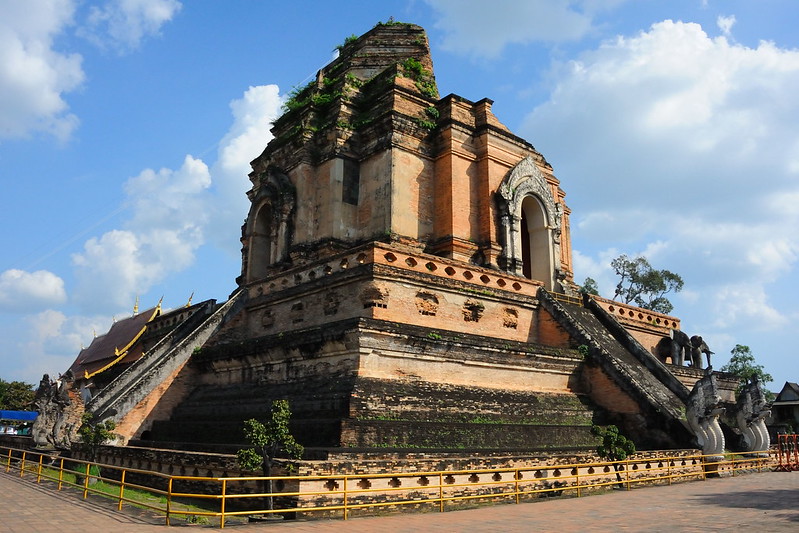
Before you go, explain basic temple etiquette to your children: shoulders and knees covered, shoes removed before entering and quiet voices at all times. Never point feet toward a Buddha image.
Never point feet toward a Buddha image. To prevent “temple fatigue,” limit visits to a couple in the morning and perhaps one in the late afternoon.
Make it fun by turning your visit into a treasure hunt. Try to spot golden chedis, naga serpent carvings or different Buddha statues.
At Wiang Kum Kam, a horse and carriage ride offers a relaxed way to see the ruins.
For Doi Suthep, the journey is part of the adventure, with sweeping views from the top and nearby attractions like a Hmong village or forest trails.
Pack hats, sunscreen, and reusable water bottles, along with a scarf or sarong for easy cover before stepping into temple buildings. A little preparation makes the experience smoother and more enjoyable for the whole family
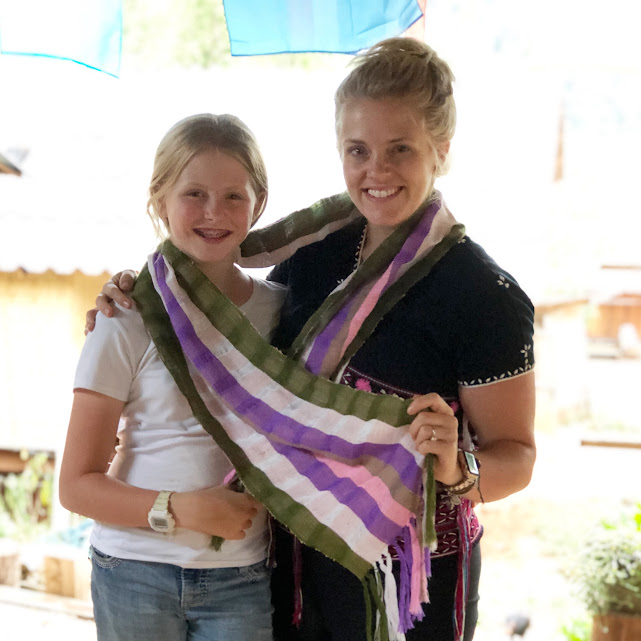
For a playful and imaginative family outing, Art in Paradise is a must in Chiang Mai. This interactive 3D art museum is filled with optical illusions and vibrant murals that invite you to step right into the scenes.
It’s a lighthearted twist on a traditional museum, perfect for snapping quirky photos and sparking creativity. With themed zones to explore, it’s a fun escape from both the heat and the rain, and it keeps kids of all ages entertained.
As an indoor, air-conditioned attraction, Art in Paradise is enjoyable any time of year. It’s especially appealing during the hot months of March to May or the rainy season from June to October. For fewer crowds, visit on a weekday morning or late afternoon instead of the weekend rush.
We had one guide in Bangkok tell us there are only three seasons in Thailand: hot, hotter and rainy and hot!
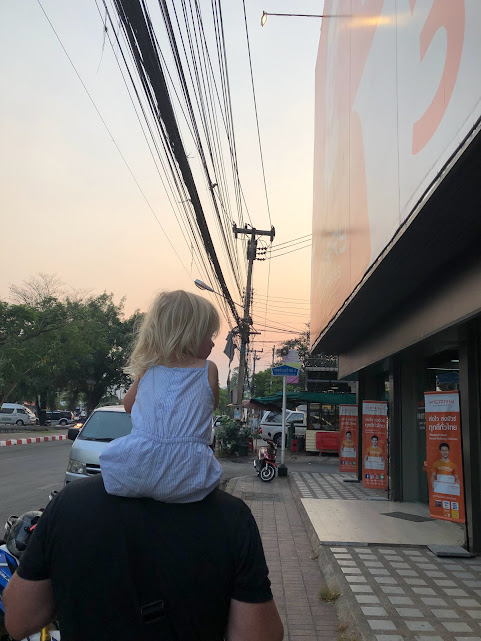
Tickets are reasonably priced, especially for the amount of entertainment offered. Foreign adults usually pay around 180–260 Baht (around $5.57 to $8.04 USD), while children between 101 cm and 135 cm tall are about 120 Baht. Kids under 100 cm often enter for free. Online bookings may come with small discounts, so it’s worth checking ahead.
This 3D art museum offers interactive optical illusions that make for fun photos and hours of entertainment.

This water park was actually what took us back to Chiang Mai! Our two youngest kids were too small when we went for the first time to visit the water park. We left them with a babysitter. However, they’ve been watching videos about it for a long time.
Now that they are older, they really wanted to visit. We all got to go into the park, and it was one of the best days we’ve ever had as a family!
When Chiang Mai’s tropical heat kicks in, a water park is the perfect escape. With giant slides, splash zones and inflatable obstacle courses, it’s a fun way for kids to cool off and burn energy while parents relax. It’s a refreshing break from sightseeing and a guaranteed recipe for great family memories.
With a wide variety of activities on the water, the park combines fun and adrenaline in a safe and well supervised environment. Lifeguards, life jackets and shaded rest spots make it suitable for visitors of all ages who want both thrills and relaxation.
Your ticket is valid for the entire day, giving you the freedom to enjoy the different attractions at your own pace. Prices start at around $29 USD per person, with reduced rates available for children and locals. Optional extras like wakeboarding are available for an additional fee.
Among the highlights are towering inflatable slides, a floating obstacle course, trampolines and a dedicated children’s zone. Visitors can also try kayaking, paddle boarding or simply enjoying the zipline for a rush of adventure. With onsite facilities such as lockers, food stalls and plenty of shaded seating, the park offers both action and comfort throughout the day.
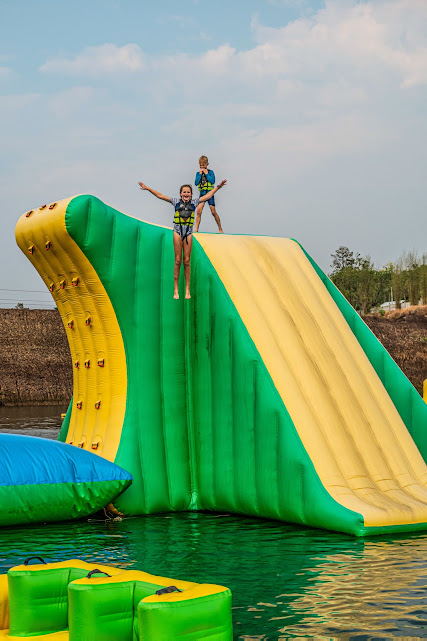
In this tour, you can choose simple entry, full access to the adventure zones, or packages that include round-trip hotel pickup for added convenience.
The experience typically lasts about 6 hours, allowing plenty of time to enjoy the attractions and relax between activities. Prices begin at around $14 USD per person, with higher-tier packages available for those who want transport and full water access included.
Highlights of the park include towering water slides, cliff-jump spots, paddleboarding, kayaking and floating obstacle courses. Safety gear, life jackets, showers and lockers are provided onsite, making it a great choice for both families and thrill seekers looking for an active day out.
For more in our experience read our post here!
The hot season from March to May is perfect for a water park day, offering welcome relief from soaring temperatures. The cool, dry months from November to February are also pleasant, with plenty of sunshine.
We just visited in July, and the water level was higher than our first visit, which was nice! There was a massive rain storm while we were there and this was really pleasant. We loved it!

Prices vary by park and package, but at a popular spot like Grand Canyon Water Park, standard tickets cost around 750 Baht (around $23.21 USD) for adults (over 120 cm tall) and 600–650 Baht (around $18.56 to $20.11 USD) for children between 90–120 cm. Kids under 90 cm often get in free. T
Tickets usually cover all main attractions, though extras like wakeboarding, lockers, food and drinks cost more.

Chiang Mai’s food markets are a feast for the senses, bustling with sizzling woks, fragrant spices and colorful displays. From lively walking streets lined with street food stalls to smaller local markets, they’re a delicious way for families to explore Thai culture. Every visit is an adventure, full of new flavors and vibrant sights that make for unforgettable memories.
We got the kids hooked on night markets on our last visit! We all looked forward to our daily fruit smoothie (around $1 each), hot noodle bowl ($2) and nutella crepes (around $1.50 each). We all had dinner for around $5 each! This is amazing for the budget and super fun for the kids.
We even gave the kids cash and had them pick their own dinners! What a fun learning experience this is for them to manage the money, track how much they’ve spent, etc.

The cool, dry months from November to February are perfect for strolling the markets, especially during festival season when they’re at their liveliest.
That said, markets are open year-round, many in the cooler evenings. For fewer crowds, head out in the late afternoon as stalls are setting up, before the busiest hours hit.
You can enjoy dishes that cost between 20 and 100 Baht ($1-3 USD), making it a budget-friendly way to enjoy a variety of Thai snacks and meals without overspending.
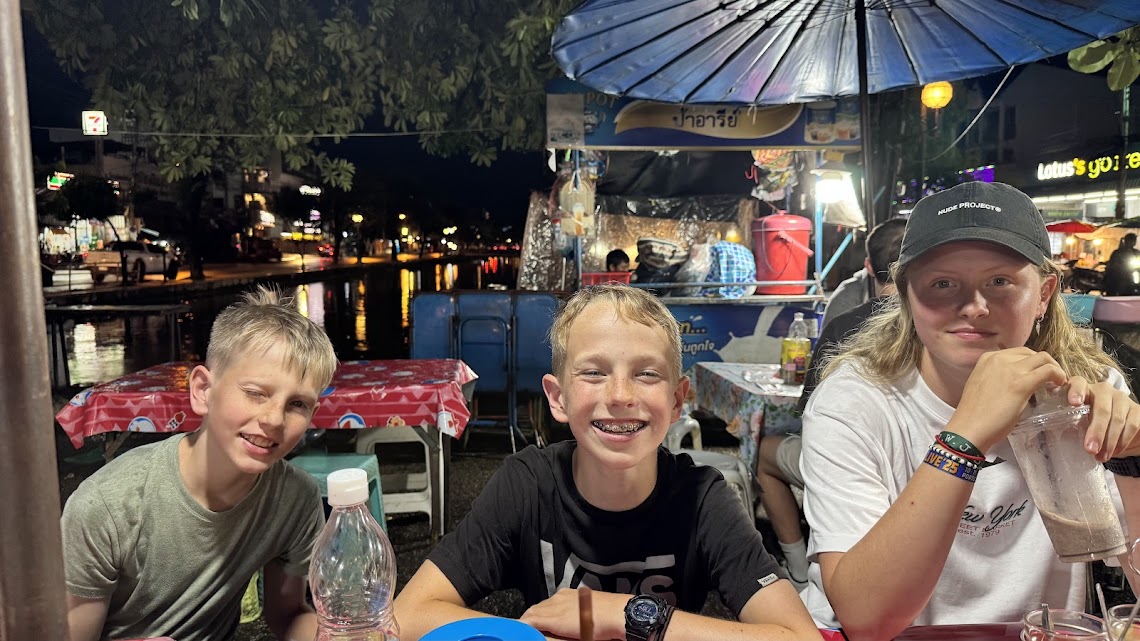
-Sunday Night Market: Held every Sunday in the Old City, this sprawling walking street market transforms Ratchadamnoen Road into a kilometer-long food and craft fair.
Arrive around 4:30 or 5:00 p.m. to browse before the evening crowds swell, and bring plenty of small bills for easy purchases. Or, be like us, and head there late! It’s pretty chill, honestly, and while Sunday is the best day to go, the market is there every night. We love this market!
-Kadmanee Market: A favorite among locals, Kadmanee offers endless street food options in a lively, casual setting. Open daily from 4:00 to 11:00 p.m., it’s the perfect place to sample authentic Thai dishes. Arrive hungry and let each family member choose a few items to share.
-Other Markets: The Saturday Night Market on Wua Lai Road is a smaller version of the Sunday event, running from 5:00 to 11:00 p.m.. The Chiang Mai Night Bazaar, open daily until late, blends food, shopping and entertainment, ideal if your visit doesn’t fall on a weekend.
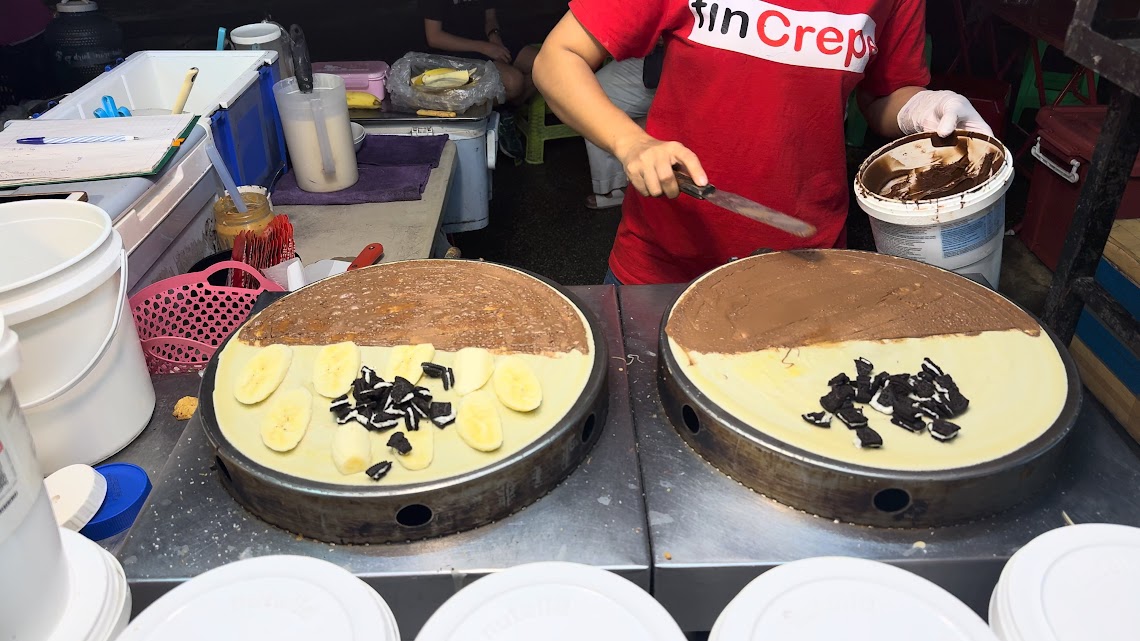
Doi Inthanon National Park, home to Thailand’s highest peak, is a haven for families who love nature and adventure. Just a couple of hours from Chiang Mai, it offers cool mountain air, lush forests and spectacular waterfalls. Kids can wander along gentle nature trails, splash in misty cascades and learn about local culture by visiting nearby hill tribe villages.
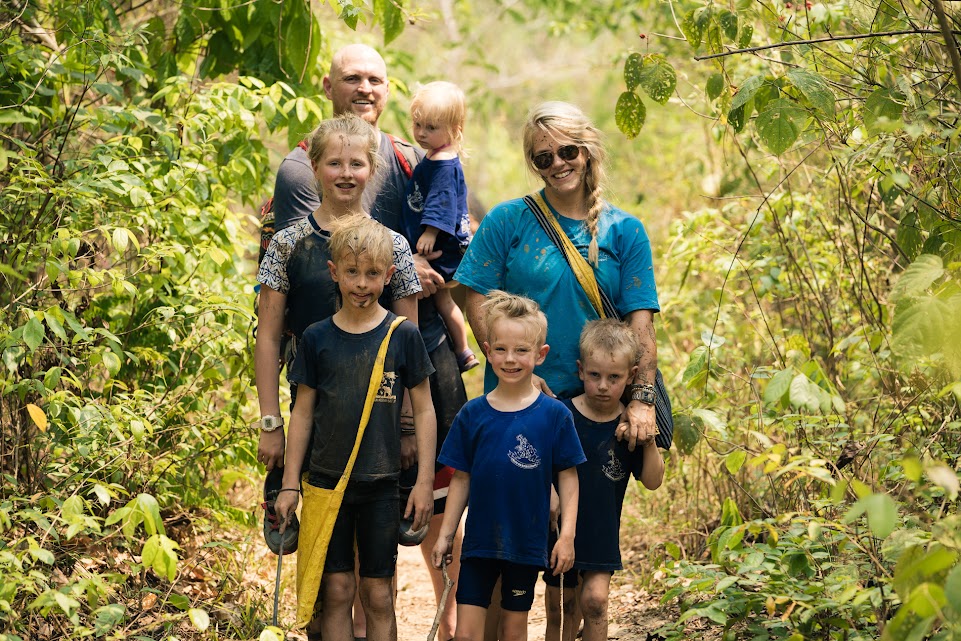
The cool, dry season from November to February offers clear skies and crisp air, making it the best time for panoramic views and hiking.
The rainy months from June to October bring powerful, photogenic waterfalls, though some trails may be slippery or closed. Avoid the “burning season” in March and April, when air quality can drop.
Park entry is 300 Baht ($9.24 USD) for foreign adults and 150 Baht ($4.62 USD) for children ages three to14. Visiting the royal pagodas costs an extra 40 Baht ($1.23 USD) per person.
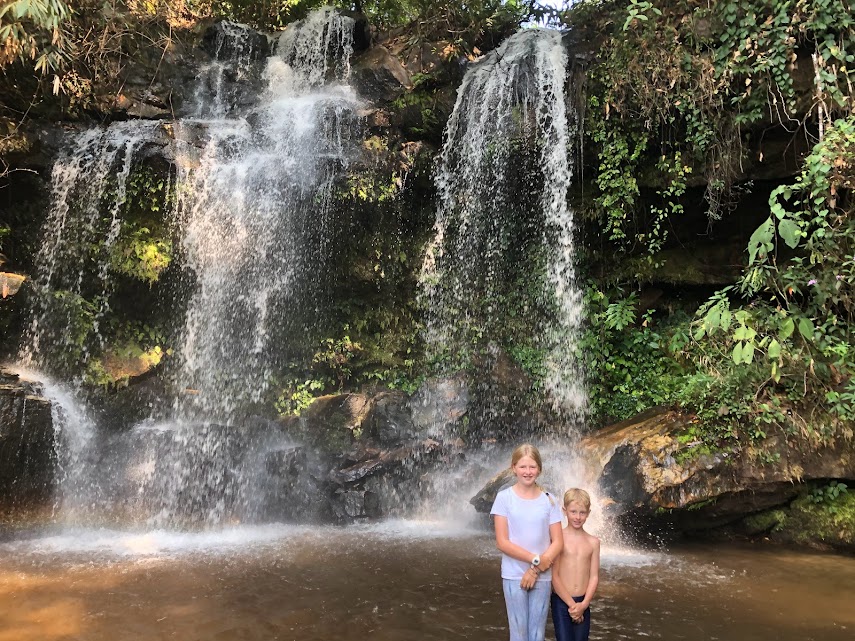
Dress in layers, the summit can be much cooler than the city, with early mornings sometimes dipping into single digits.
For families, the Ang Ka Nature Trail is a perfect short boardwalk loop through the cloud forest, while longer routes may require a local guide.
Don’t miss the waterfalls, especially Wachirathan, which is easy to reach and refreshingly misty on a hot day. Since the park is 1.5–2 hours from Chiang Mai, plan for a full-day trip with snacks, water and cash for entry fees or treats from hill tribe markets.
If you’d prefer not to handle the logistics, a private or small group tour can be a great choice, most include transport, a guide, lunch and stops at the park’s highlights, making the day effortless and enjoyable for the whole family.
This full-day tour from Chiang Mai takes you into Doi Inthanon National Park, where cool mountain air, waterfalls and cultural encounters await. The itinerary includes a guided trek along the Pha Dok Siew Nature Trail, visits to the King and Queen pagodas and a stop at Thailand’s highest peak, with time to explore a Karen hill tribe village along the way.
The trip lasts about 10–11 hours and prices start at around $37 USD per person, with some options including entry fees. Highlights include a 2-hour hike through rice terraces and jungle, stunning waterfalls like Wachirathan and breathtaking panoramic views of the national park.
This day trip from Chiang Mai takes you into the scenic landscapes of Doi Inthanon National Park, home to Thailand’s highest mountain. The experience blends nature, culture and history, with stops at famous landmarks, tranquil waterfalls and local hill tribe villages. With transport, a guide and lunch included, it’s an easy way to explore one of the region’s most popular natural escapes.
The outing lasts a full day, usually returning to Chiang Mai in the late afternoon or early evening around 5:30–6:00 p.m. Small group sizes keep the atmosphere relaxed and allow more time to enjoy each stop.
Prices begin at around $39–42 USD per person, depending on the package. Some tickets already cover entrance fees, while others require visitors to pay those costs separately onsite.
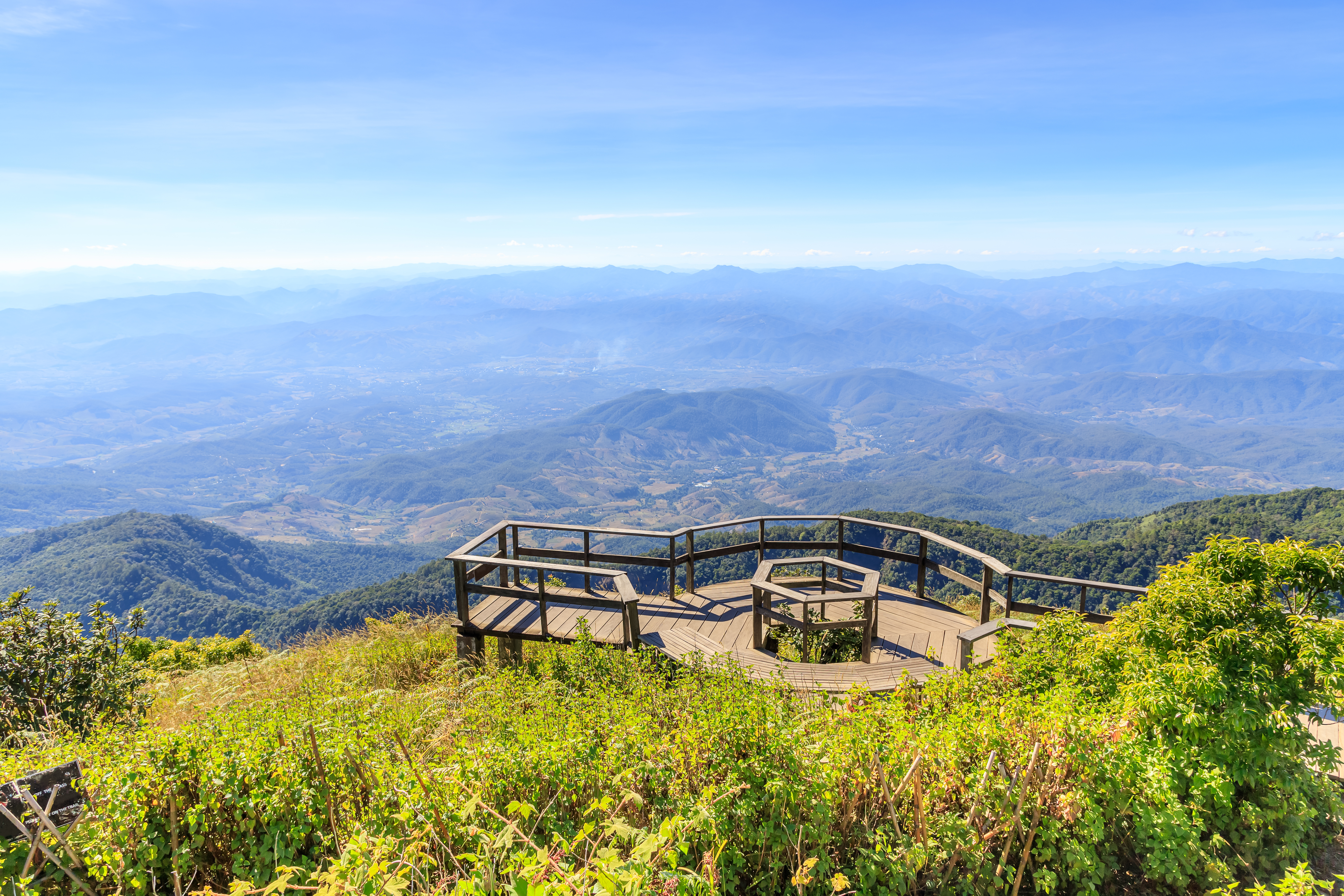
Officially called Bua Thong Waterfall, the “Sticky Falls” are one of Chiang Mai’s most unique natural wonders.
The limestone-covered rocks have a rough, grippy texture, letting you climb up and down the cascading tiers without slipping. It’s an exhilarating, hands-on adventure that’s perfect for families looking for something unforgettable to do.
The falls flow year-round thanks to a natural spring, but the cool, dry months from November to April are the most pleasant. Water flow is gentler, making climbing easier and safer, and the weather is ideal for outdoor fun.
To avoid crowds, go on a weekday early in the morning when the park opens or later in the afternoon. Weekends and holidays can get busy.
Entry to Sticky Falls is completely free, making it one of the best-value activities near Chiang Mai. Your only costs will be transport and any snacks or drinks from the local vendors.
We love grabbing a local van to take us around for the day! Negotiate a price and they will wait for you throughout the day.
-Go barefoot for the best grip on the limestone, or wear water shoes if you prefer some protection.
–Avoid flip-flops, they slip off easily. Bring a change of clothes and towels, as you’ll definitely get wet.
– A waterproof bag is a must if you want to take photos while climbing.
–Explore all the waterfall’s tiers, using ropes on the steeper sections, and don’t miss the Seven-Colored Spring at the top. This sacred spot is a peaceful place to rest before making your way back down.
Le Petit Petting Zoo is a charming and intimate mini-zoo designed with families and young children in mind. It provides a safe and welcoming environment where visitors can interact directly with animals such as capybaras, meerkats and rabbits. Feeding and petting the animals is the highlight of the visit, offering both fun and educational moments for children and adults alike.
The relaxed setting makes it easy to explore without feeling rushed, and its small size is especially convenient for families with kids. To complete the experience, the onsite café serves meals and snacks, allowing guests to enjoy a break right beside the animal enclosures.
Entry costs between 100 and 200 THB per person (around $3 to $6 USD), and tickets often include a portion of animal feed to make the interaction even more personal and memorable.
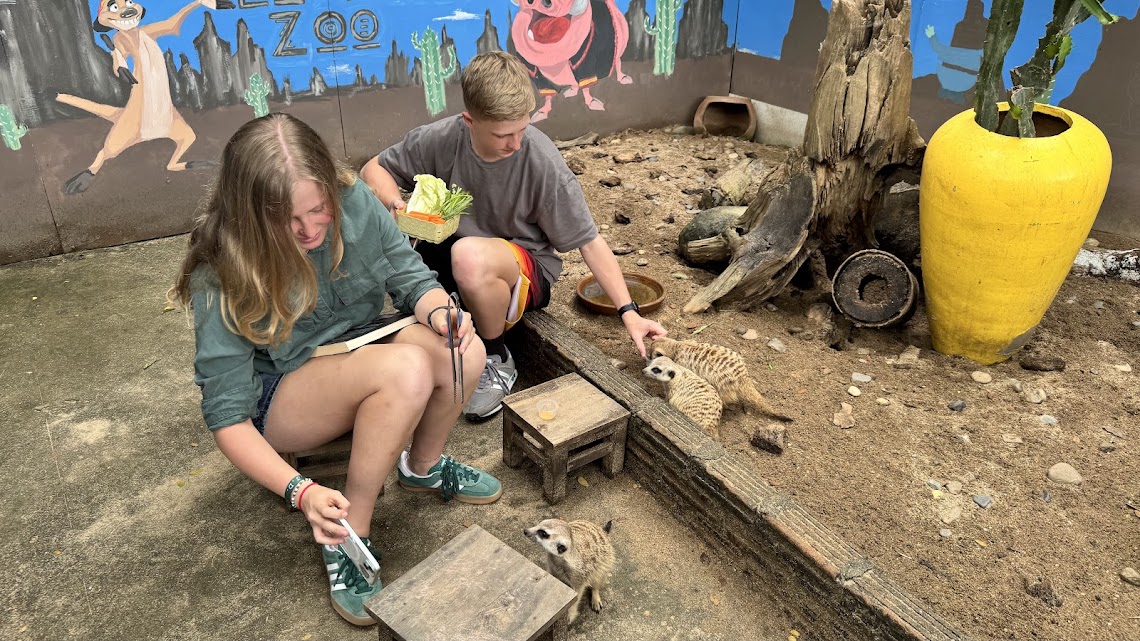
Elephant POOPOOPAPER Park is a quirky and eco-friendly attraction that stands out as one of Chiang Mai’s most unusual experiences. This open-air museum showcases the fascinating process of transforming elephant dung into eco-friendly paper, combining fun, education and sustainability. You are guided through each step of the recycling process and gain insight into how waste can be turned into something both practical and beautiful.
One of the highlights of the visit is the interactive workshop, where you can try your hand at making your own paper souvenirs. The experience is both educational and entertaining, making it suitable for families, travelers and anyone interested in green practices. To round off the tour, the onsite gift shop offers a wide range of creative and colorful products made from elephant-poo paper, perfect as unique keepsakes or gifts.
Entrance fees are affordable, typically between 100 and 200 THB per person (around $3 to $6 USD), making it an accessible way to enjoy an eco-conscious and memorable activity
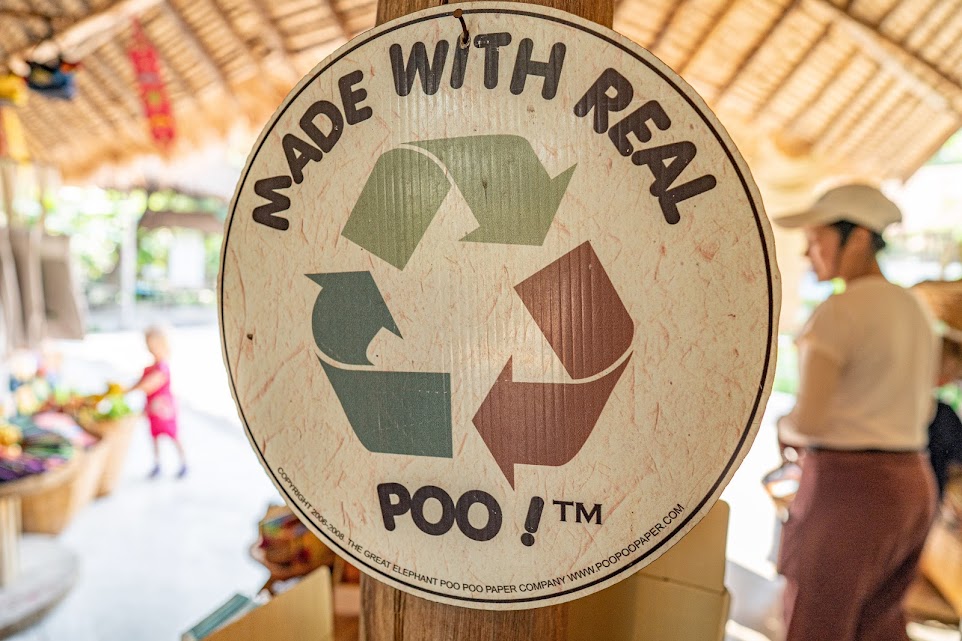
The Jungle Coaster, set within Pongyang Adventure Park in Mae Rim, offers an unforgettable ride through the mountainside jungle. This two-person sled glides along an elevated track, twisting and turning through lush greenery while giving riders the freedom to control their own speed using a hand brake. Whether you’re chasing thrills or prefer a gentler pace, it’s an adventure that combines excitement with breathtaking natural scenery.
Adding to the experience, Pongyang Adventure Park itself is home to several other adrenaline-filled attractions such as ziplining and a giant swing, making it a great destination for adventure lovers. A single ride on the Jungle Coaster is priced at around 200 THB (about $6 USD), offering both value and fun in a beautiful mountain setting.
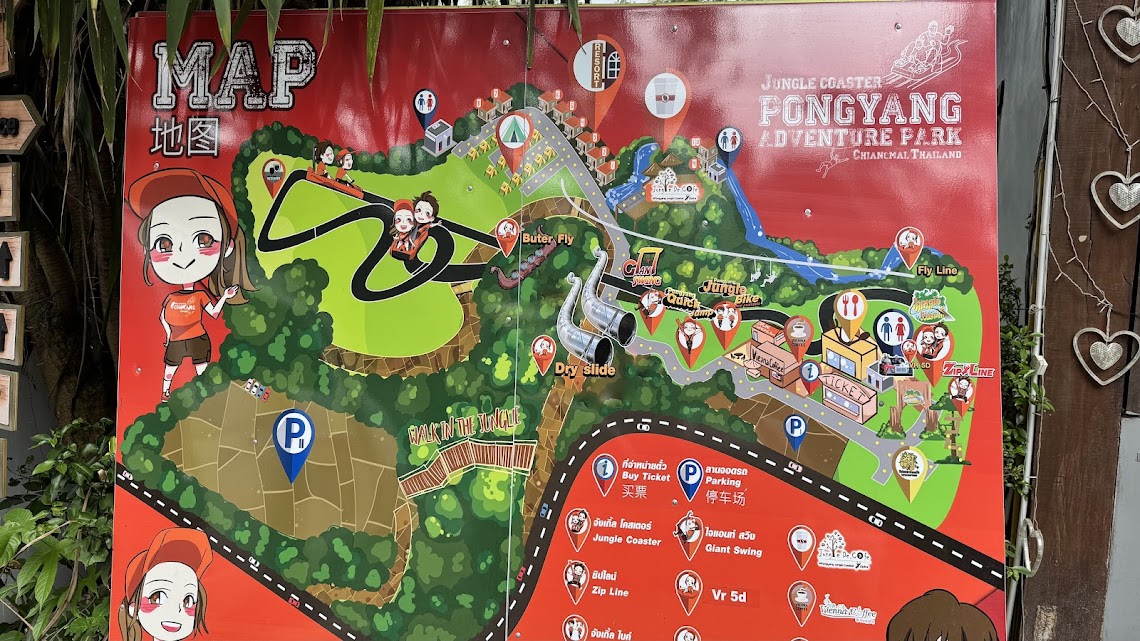
During our time in Chiang Mai, we explored some of the city’s modern shopping malls, including Central Festival, Maya Lifestyle Shopping Center and Central Plaza Chiang Mai Airport. Stepping inside was a refreshing break from the tropical heat, with their cool air-conditioned spaces and sleek, modern design offering a stark contrast to the lively outdoor markets.
We spent time wandering through a mix of international brands and local shops, and the highlight was definitely the food courts. From authentic Thai dishes to international flavors, there was so much variety at surprisingly affordable prices. The malls also offered plenty of entertainment. We noticed cinemas, play areas and arcades that made them just as fun for families as for shoppers.

During our stay in Chiang Mai, we decided to step into the ring for a Muay Thai lesson, and it turned out to be one of the most energetic and memorable experiences of the trip. The gym welcomed beginners like us with open arms, and our instructor walked us through the basics of this traditional martial art, often called the “Art of Eight Limbs.” We practiced stances, punches, kicks and knee strikes, all while learning about the cultural significance of Muay Thai in Thai history.
The session was not only a fantastic cultural immersion but also an intense workout that left us sweaty and smiling. What we really enjoyed was how family-friendly and inclusive the environment felt; people of all ages and skill levels were encouraged to join in and have fun. A single class typically costs around 300 to 500 THB per person (about $9–15 USD), making it an affordable way to experience a cornerstone of Thai culture while staying active.

One of our favorite ways to unwind in Chiang Mai was treating ourselves to family foot massages after long days of exploring temples and wandering through the markets. The city is filled with massage parlors, and we were impressed by how clean, professional and welcoming they were. Sitting side by side, we could finally let go of the day’s tiredness and enjoy the soothing touch of a traditional Thai foot massage.
It turned out to be the perfect way to relax together as a family, combining comfort with a bit of cultural tradition. What made it even better was how affordable it was, a full hour of bliss generally costs between 150 and 300 THB per person (≈ $4.50–$9 USD). With massage shops on almost every corner, it was an easy and rewarding indulgence that quickly became part of our Chiang Mai routine.
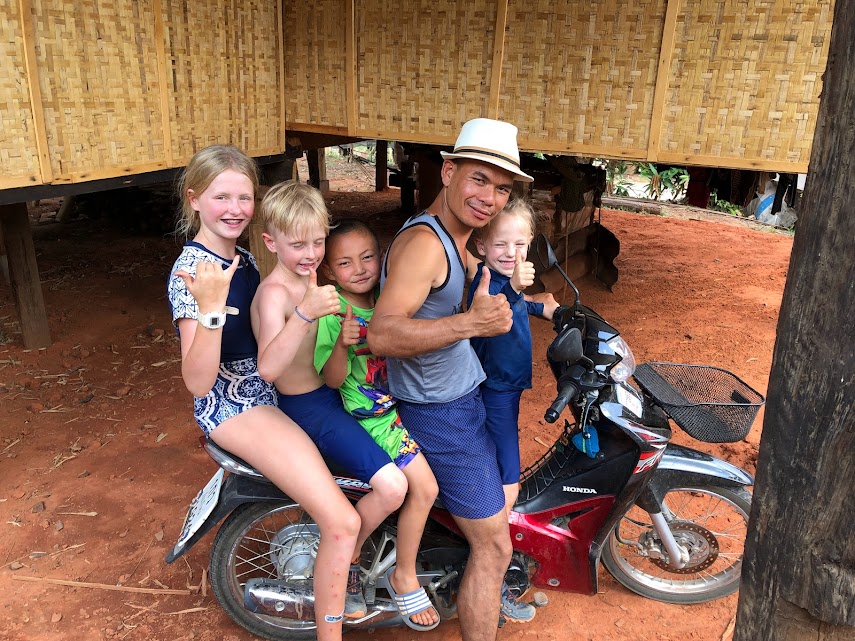
When planning your journey to Chiang Mai, you have several great options, each with its own trade-offs in terms of cost, speed and experience. Most travelers begin their trip from Bangkok, and whether you’re in a rush or looking to take the scenic route, there’s a travel style to suit every family.
Flying from Bangkok to Chiang Mai is a fast, convenient and family-friendly option, with the journey taking just around 1 hour and 15 minutes.
Budget airlines like AirAsia, Nok Air and Thai Lion Air offer fares starting from as low as $25 USD, while full-service carriers such as Thai Airways and Bangkok Airways provide additional comforts like checked baggage and in-flight meals.
We flew to Bangkok and needed to wait several hours before our flight to Chiang Mai. We all took a nap on airport seats!
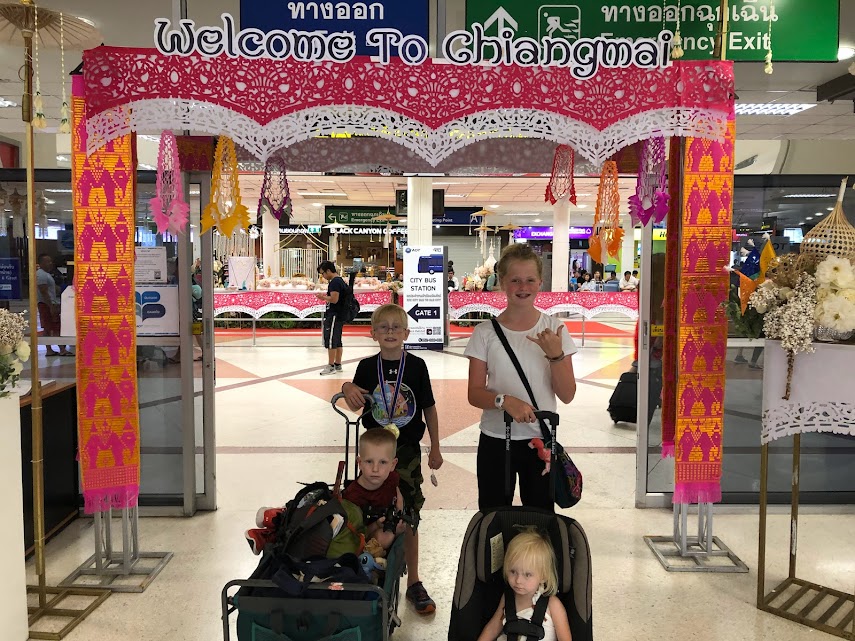
Flights depart from both Suvarnabhumi (BKK) and Don Mueang (DMK) airports and land at Chiang Mai International Airport (CNX), located just minutes from the city center. This option is ideal for families with young children, travelers on tight schedules or anyone who values speed and comfort.
Taking the train from Bangkok to Chiang Mai offers a scenic, relaxed and immersive travel experience.
The journey takes between 11 to 15 hours, making it ideal for those who enjoy slow travel and want to soak in views of the countryside. Costs vary depending on the class, ranging from basic third-class fan seats to more comfortable first-class sleeper cabins. Many travelers choose the second-class air-conditioned sleeper for a good balance of comfort and affordability.
The most affordable choice is the 3rd Class Fan Seat, costing about ฿230 (around $7 USD), which provides a very basic but economical way to make the journey.
For a step up in comfort, the 2nd Class A/C Seat is available at around ฿558 (around $17 USD). The most luxurious option is the 1st Class A/C Sleeper, offering more space and privacy, with prices between ฿1,646 and ฿1,746 (about $51–54 USD). Keep in mind thathat purchasing tickets online may come with a small additional cost compared to buying them directly at the station.
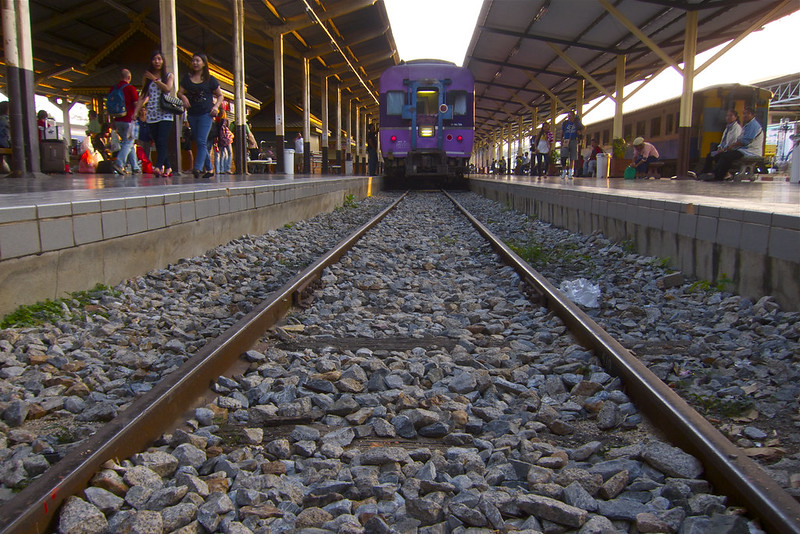
Trains depart from Krung Thep Aphiwat Central Terminal and arrive at Chiang Mai Railway Station. This option is perfect for travelers looking to save on accommodation with an overnight ride and is especially memorable for kids, making it a great choice for families seeking a unique journey.
Traveling from Bangkok to Chiang Mai by bus is the most budget-friendly option, with a journey time of 10 to 12 hours. Multiple bus companies operate on this route, offering various classes to suit different comfort levels.
VIP buses are a popular choice, featuring reclining seats, air conditioning and onboard amenities for a more comfortable ride. Buses depart from Mo Chit (Northern Bus Terminal) in Bangkok and arrive at Chiang Mai Bus Terminal 3 (Arcade).
Fares can vary depending on the company and class of service. Basic seats usually cost around ฿594 (about $18 USD), while more comfortable VIP buses with wider seating and extra amenities are priced closer to ฿1,020 (about $31 USD) or higher.
This option is best suited for budget-conscious travelers who don’t mind a longer trip and are looking to save as much as possible.
Navigating Chiang Mai with children is a breeze. The city’s slower pace compared to Bangkok, combined with its range of convenient transport options, makes getting from place to place both practical and enjoyable.
Our go-to in Thailand is always the big vans. They are super comfortable, cheap to use and plentiful. We use Grab to get one and then negotiate with the driver if we want them all day. Alternatively, you can ask for your hotel to arrange an all-day van for you.
Best for convenience, comfort and reliable pricing, ride-hailing apps like Grab (Thailand’s version of Uber) and Bolt make getting around incredibly simple. Just download the app, enter your destination and a driver will pick you up. Fares are clearly displayed, and you can pay via credit card or cash.
We love it because you get an air-conditioned car with seatbelts, ideal for longer trips or escaping the midday heat. Larger vehicles can also be selected to accommodate families with more passengers or luggage.
In some areas, Grab even offers a GrabCar for Kids option, which may include a child seat (though availability is limited).
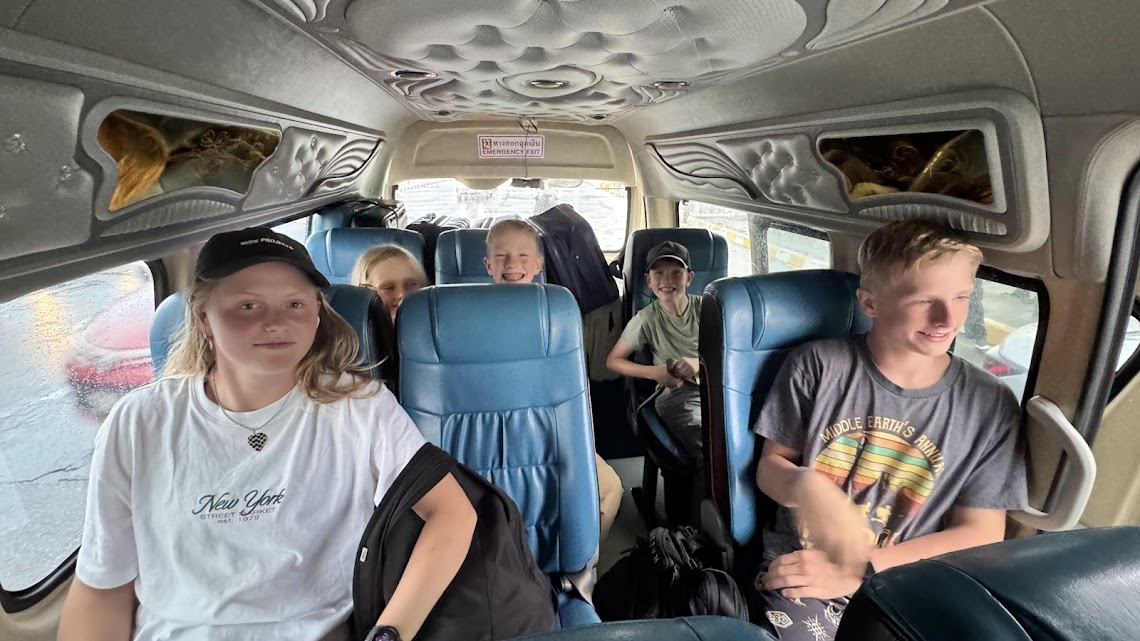
These local “taxi” trucks are very popular with tourists and locals alike. They are best for having a local experience and short-distance budget travel.
Chiang Mai’s iconic red songthaews (converted pickup trucks with bench seating in the back) are a fun, local way to get around. Simply flag one down, tell the driver your destination and if it’s on their route, they’ll quote a fare usually around 30–50 THB per person (around 0.93 to 1.55 USD). For more flexibility, you can also hire a songthaew privately for the day or a custom route.
We don’t usually use them (we did only once) as we prefer the vans and TukTuks. However, kids often find riding in the open-air backseat exciting and novel. It’s a memorable way to experience local culture.
Just keep in mind there are no seatbelts, so it’s best suited for short trips and older children who can sit securely.
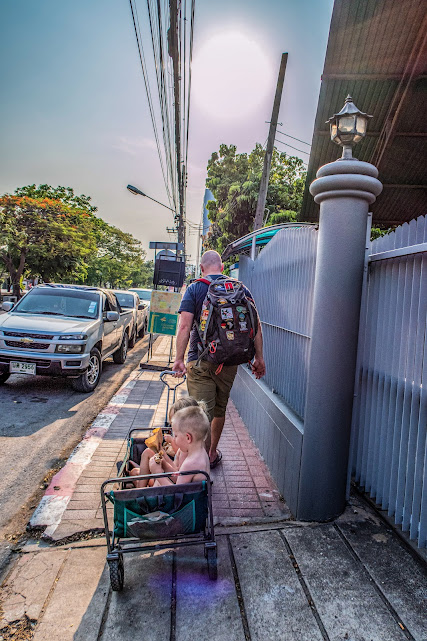
Riding in a TukTuk is a must-do Thai experience. Tuk-tuks are three-wheeled motorized vehicles perfect for zipping around town. They’re best for short distances, as they can be pricier than songthaews. Always agree on the fare before hopping in. Don’t be afraid to negotiate!!
The tuk-tuk ride is a highlight for many kids, with the wind in their hair, street sounds all around and a sense of adventure. However, like songthaews, they lack seatbelts and are more suitable for quick rides with older children.
Best for exploring the Old City at your own pace. Chiang Mai’s Old City is compact, flat and full of charm, making it ideal for walking or cycling. Many hotels, guesthouses and rental shops offer bicycles, some even with child seats or tandem setups.
Walking allows for spontaneous discovery of quiet temples, street food stallsa and hidden cafés. Biking is a fun way to cover more ground and keep kids active. Just be cautious of traffic, especially when venturing outside the Old City walls.
When visiting Chiang Mai as a family, being prepared with solid travel insurance and a basic first aid kit ensures peace of mind. While the city is safe and has quality medical care, it’s wise to be ready for minor mishaps or unexpected emergencies.
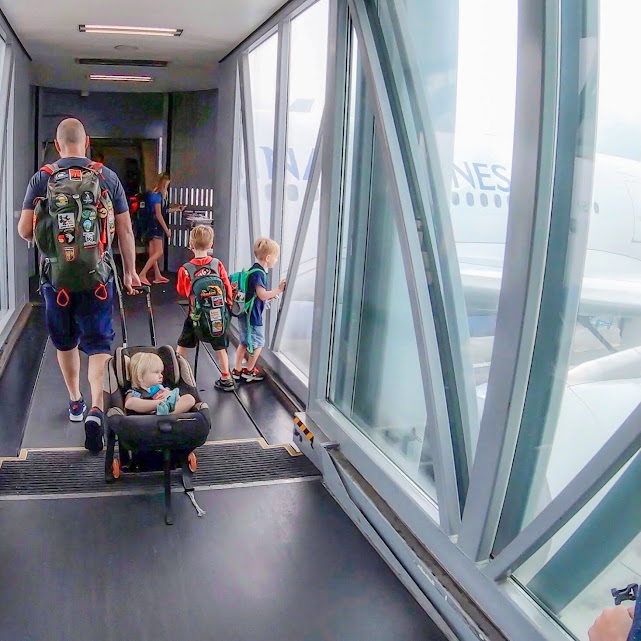
When choosing travel insurance for your trip, it’s important to ensure comprehensive coverage that includes emergency medical care, such as hospital stays, doctor visits and emergency room treatment, ideally with high coverage limits.
Medical evacuation is another key feature, covering the cost of transport to Bangkok or back home in the event of a serious emergency. Look for policies that also include trip cancellation or interruption coverage, which can protect your investment if plans change due to illness or unforeseen circumstances.
For your family, you can consider insurance that covers all members.
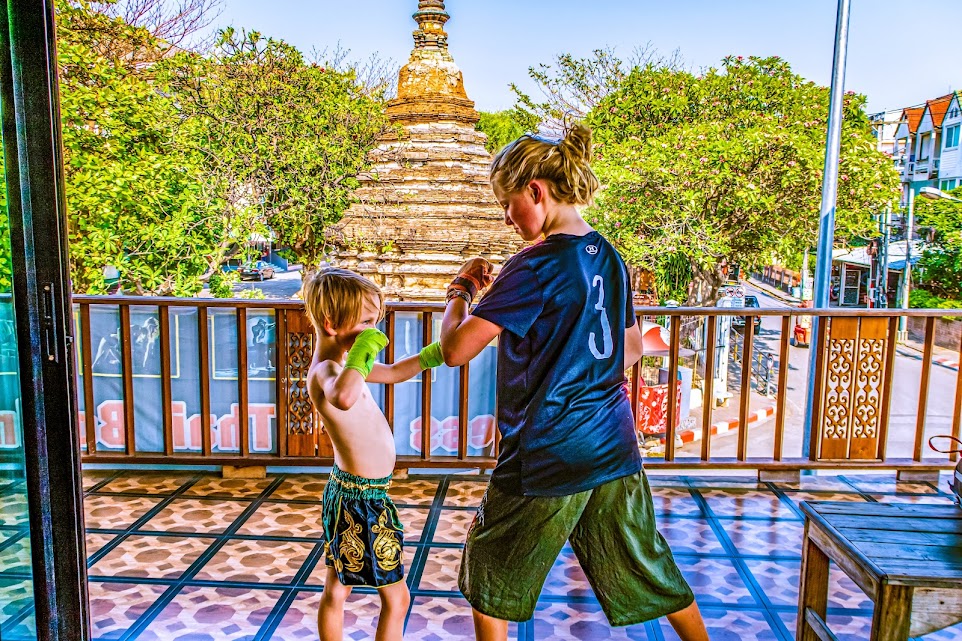
Chiang Mai offers accommodations to suit every taste and budget, from serene riverside resorts to character-filled guesthouses nestled within the historic Old City walls. There are also some amazing Airbnbs to pick from. Sometimes this can be nice so you can cook your own food!
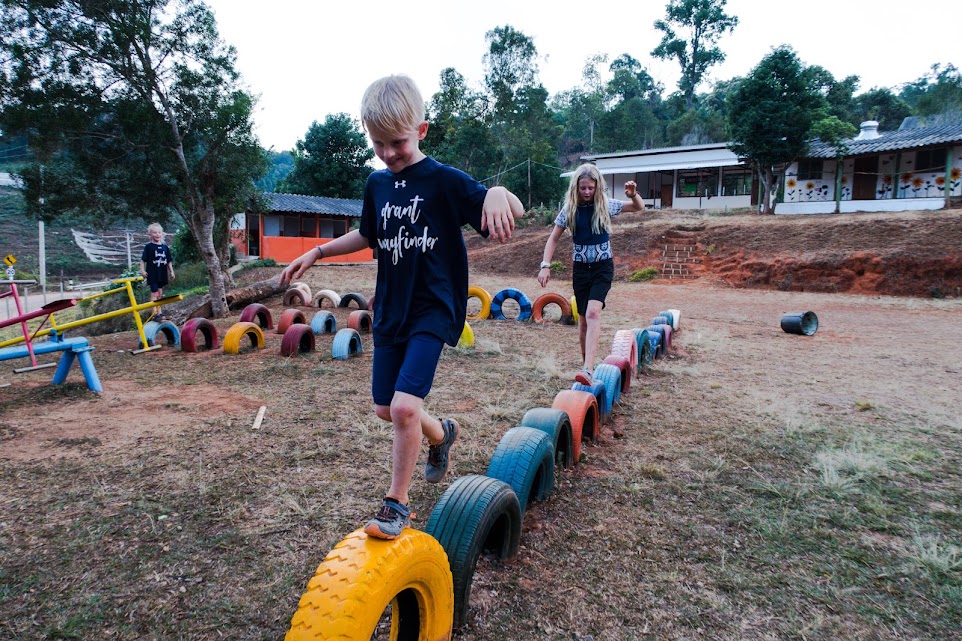
137 Pillars House: A colonial style boutique hotel offering spacious suites, lush gardens and a serene pool area, perfect for families who want a quiet, luxurious base. Its peaceful riverside location just outside the Old City gives you a retreat from the bustle, yet you’re only a short ride from cultural attractions. Rates can start from around $279 USD per night on certain dates, though most deals fall closer to the $400+ USD range.
Anantara Chiang Mai Resort: Elegant and riverside, this resort blends modern comfort with Thai charm. Perfect for families, because it has large rooms, a kid-friendly pool and a relaxed vibe. The onsite spa and riverside dining let parents unwind while still being close to the city’s main sights.
Prices per night start from $260–$290 USD during special offers or low season, with average prices usually in the $300–$400 USD range.
U Chiang Mai: Located right in the Old City, this stylish hotel offers family-friendly convenience with spacious rooms, a central pool and a 24-hour stay policy (so your departure time works around your kids’ needs). Being able to walk to temples, markets and cafés means less
You can sometimes find rates as low as $60–$80 USD per night during the low season, such as in September or May, or through special promotions, while the average nightly rate for a standard room is around $100–$130 USD.
Bodhi Serene Chiang Mai: With its quiet courtyard pool and traditional Lanna architecture, this hotel gives families like ours a calm escape while keeping attractions close at hand. Its location inside the Old City walls means you can easily explore without long commutes.
In the low season (March or August) or with special deals, superior rooms can be as low as $50–$60 USD. Standard rooms usually run $70–$90 USD, while in peak months like November and December, rates often exceed $80 USD for superior rooms and $120 USD for suites.
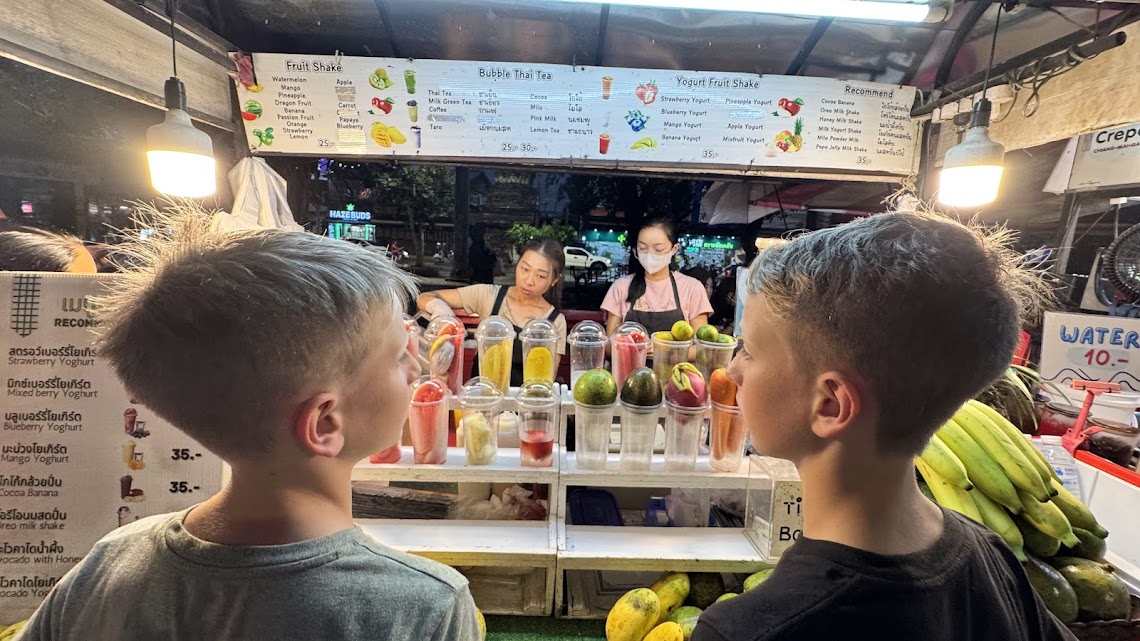
i Lanna House: A friendly, budget-friendly guesthouse offering clean, comfortable rooms and warm service. It has a relaxed atmosphere, Old City location and easy access to local restaurants serving kid-friendly dishes.
Rates can start as low as $50–$60 USD per night in the low season, with standard rooms more commonly around $60–$80 USD; expect slightly higher prices in peak months like November, December and January.
Imm Hotel Thaphae Chiang Mai: Right by the famous Tha Phae Gate, this hotel keeps you in the heart of the action, making it easy for families to pop back for rest breaks. The simple, reliable rooms are ideal for those who spend most of the day exploring.
Rates can be as low as $20–$30 USD per night in the low season (around October) or during special promotions, with standard rooms typically ranging from $35–$50 USD.
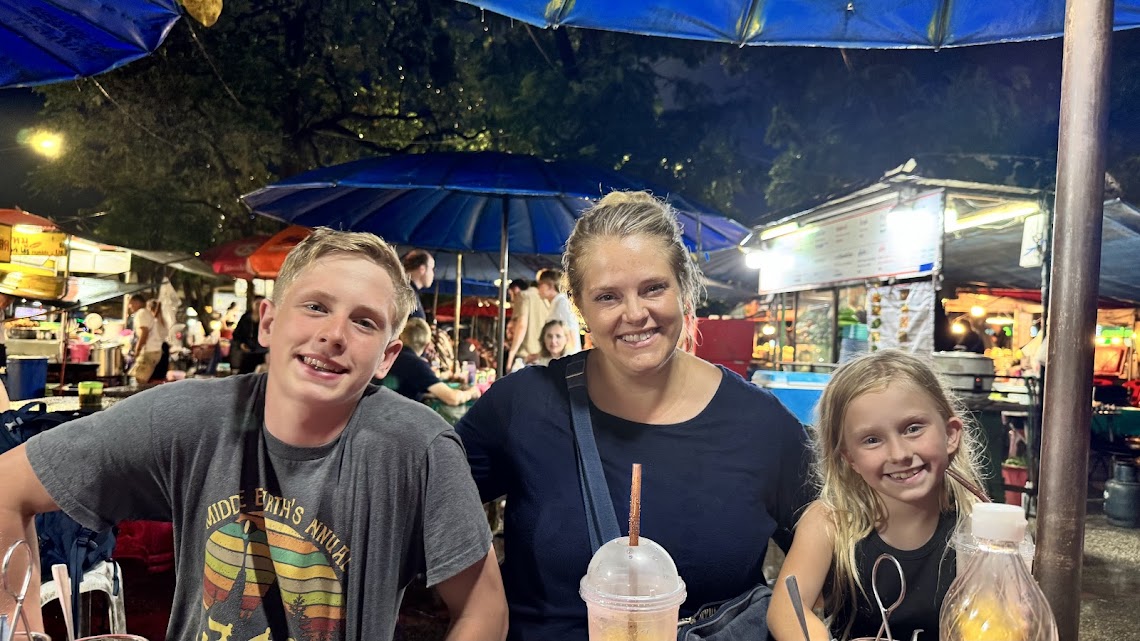
Enjoy your time in this beautiful city!! We certainly have fallen in love with it.


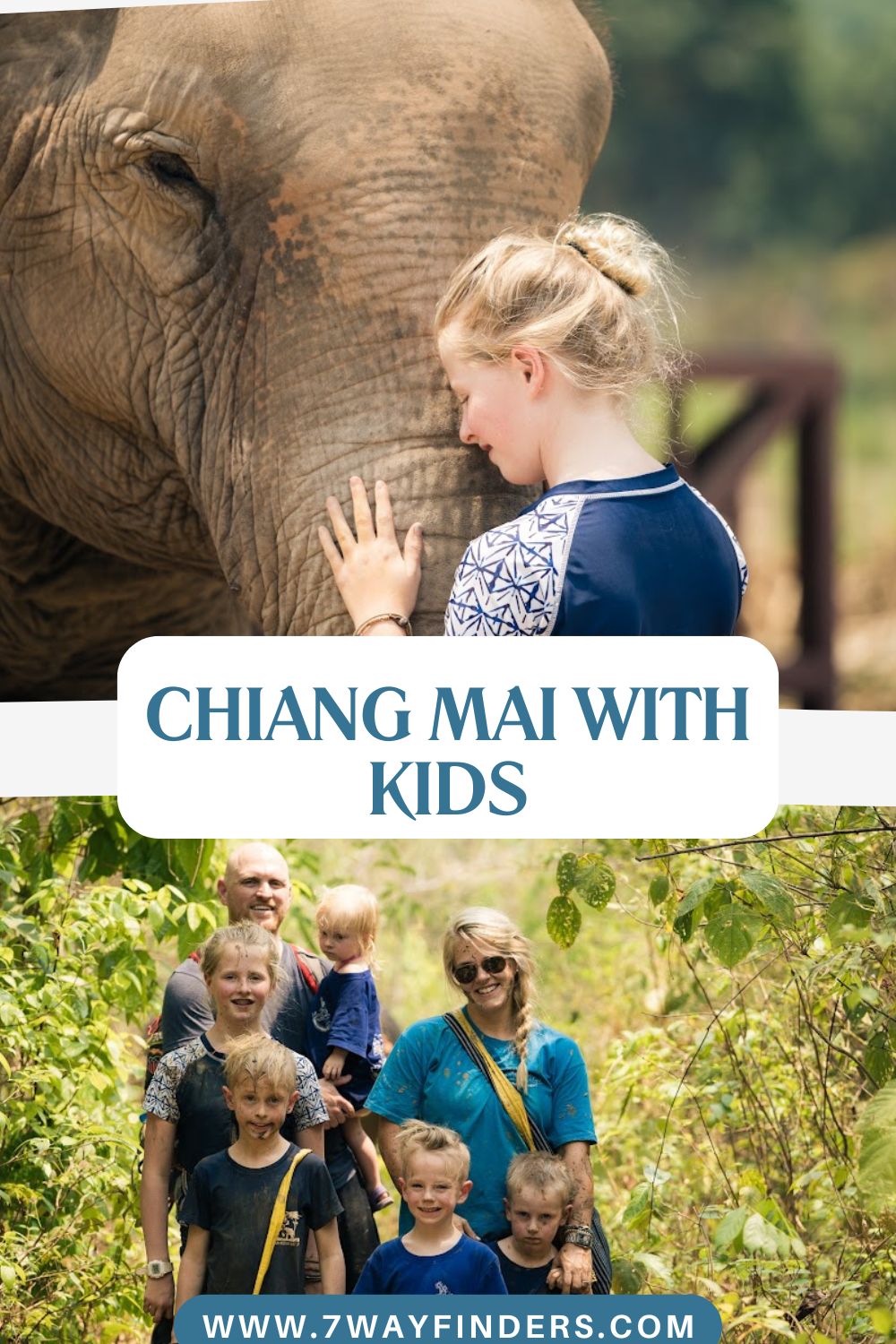

Check out your travel necessities from a comprehensive list of all the 7Wayfinders Travel Must-Haves. Click Here!
Find a nice hotel near Chiang Mai from Expedia, or Vrbo, (we also love Tripadvisor and Hotels.com)
Discover more of Chiang Mai while having fun through exciting activities from GetYourGuide, Airbnb Experiences, or Viator
Need to rent a car to navigate the city? Visit Rentalcars.com.
Get insured while traveling with World Nomads / SafetyWing
Want to have a photo shoot while traveling? Check out flytographer!
Capture your best memories in Chiang Mai as we do with a GoPro, Sony camera, or our favorite drones: DJI FPV, Air, and Mini
Check out your travel necessities from a comprehensive list of all the 7Wayfinders Travel Must-Haves. Click Here!
Best International Travel Apps When Traveling to Asia with Kids
Hong Kong with Kids: A Family Adventure You’ll Never Forget
